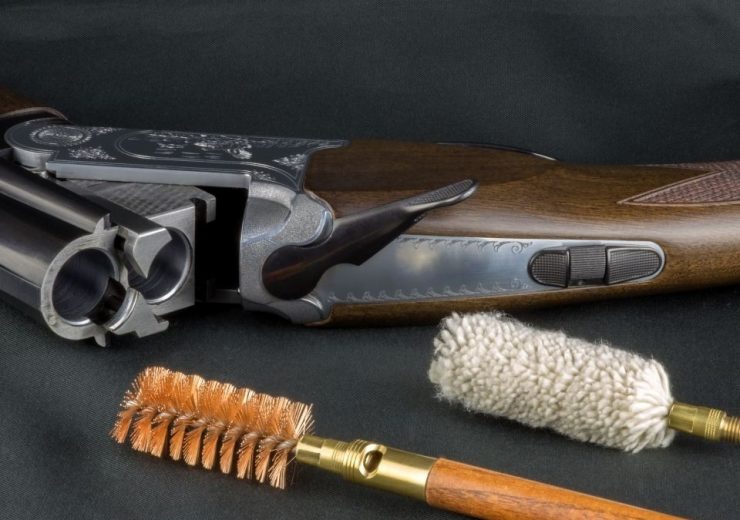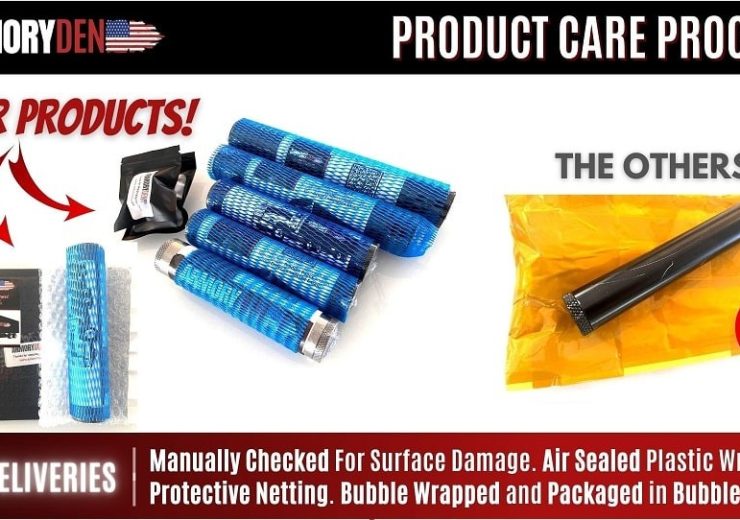The Proper Way Of Cleaning and Maintaining Your Glock Firearm
Whether you enjoy shooting as a hobby or profession, maintenance is essential for owning a firearm. Regular, thorough cleaning will keep your firearm functional for much longer. Besides increasing its longevity, cleaning your firearm helps to improve accuracy and ensure safety.
Today, we will explore how to properly clean a Glock, including an ideal maintenance schedule and the best cleaning accessories you’ll need.
Before You Start Cleaning Read the Owner's Manual
Read the manufacturer’s instructions to familiarize yourself with the inner mechanisms of your firearm. It will help you clean it more easily. Brand new Glocks would typically come with a printed manual in the packaging, but if you’ve lost your copy, you can request one from the original manufacturer.
Prepare Your Cleaning Accessories and Work Area
Find a well-lit, ventilated space in your home to set up your workstation. The lubricating oil and cleaning solvent may contain hazardous chemicals, so you want an open space to avoid inhaling it. Also, you need a cleaning kit readily available at your workstation.
Amory Den offers cleaning kits, including everything you need for the procedure: a cleaning brush, lubricating oil, solvent trap kits, and muzzle extensions. Spread out these items on a spacious table or mat.
Wear Safety Equipment
You need to put on safety glasses to protect your eyes from spring-loaded carbon residue and the toxic fumes that may come from the solvent and lubricant. You’d also need to have disposable gloves on to protect your skin from potentially harmful cleaning chemicals.
How to Clean Your Glock Firearm
1. Take the Glock apart
- Point it away in a safe direction and release the magazine.
- Rack the slide several times to ensure no ammunition is left in the chamber.
- Then pull the slide back and pull down its lock.
- Remove the spring and the barrel from the slide.
2. Clean the Barrel
- Attach a brush to the rod and run it through the chamber to break up carbon buildup.
- Using the rod, run a solvent-soaked patch through the chamber and bore of the barrel.
- Soak another patch in lubricating oil and run it over the external section.
3. Clean the Frame, The Slide, And The Recoil Spring
- Use a clean brush to remove carbon and dirt from the exterior of the frame, the magazine interior, the rails, the spring trigger bar, and everything in between.
- Soak a rag in the solvent and clean these parts again.
4. Apply Lubricating Oil
- Apply a drop of lubricant to the end of the trigger bar, the guide rod, the back ends of the slide rail cuts, and the square shelf where the barrel’s hood locks up into the slide.
- Use a patch to distribute the oil drops evenly around these parts.
5. Reassemble and Test
- Reassemble your Glock by inserting the barrel, the recoil spring, and the slider back onto the frame.
- Without loading the magazine, point the Glock in a safe direction and pull the trigger. Release the trigger and feel it reset.
- If anything feels out of place, consult the owner’s manual to identify the problem.
How Often Should I Clean My Glock Firearm?
- Every firearm is unique, and your maintenance routine will depend on how frequently you use it.
When it's Brand New
Ideally, if your Glock is just right out of the box, you should clean it up before firing it for the first time. You have to remove all factory grease and oils from the barrel. The original lubricant is not for functionality; rather, it’s meant to protect the firearm while it’s stored.
Everyday Carry
If you use your Glock regularly, we recommend that you do a light cleaning after every shooting session or deep cleaning at least once a week.
Occasional Shooter
Perhaps you acquired your firearm for home defense and didn’t use it much. In that case, you can settle for a dry wipe and light oiling once every six months. But note that this maintenance routine keeps rust at bay and not for functionality.
Exposed to Moisture & Dirt
Moisture is the enemy of working firearms, so if your piece has been exposed to rain, fog, or snow, you need to wipe it off, clean and lubricate it immediately. The same goes for exposure to dust and dirt.
Is it Bad to Clean Your Glock Firearm Too Much?
“Too much of everything is bad” is an adage that emphasizes moderation in anything, including firearm cleaning. Over-cleaning will not damage your Glock, but heavy lubrication can quickly become a problem if it gets into the firing pin channel. It will ease up friction so much that a light tap could cause a misfire.
Additionally, excess lubricant in your firearm can easily combine with carbon fouling and dirt from the air to form a grit, and you’ll need to take it out before it gets messy. There’s really no need to overdo it.
Cleaning Your Glock Firearm Can Be A Lot Easier
At Armory Den, we understand the importance of keeping your firearms clean, and we want to help you keep them that way as conveniently as possible. We’ve noticed two challenges firearm owners encounter when cleaning their pieces through traditional methods. The first one is that fouling residue and grit often create a mess on the workstation. The second is when executing a cursory barrel clean with a flexible cleaning brush, Glocks, like many other striker fire and other Browning style pistols, have an overextended guide rod that pokes out when the slide is racked and may be blocked by the bottom of the solvent trap. So this blocks the slide from moving backwards into an open and locked position.
Consider using a solvent trap with a muzzle extension device to address these issues to streamline the Glock cleaning process. Solvent traps help to catch and trap the cleaning solvent for easy disposal. That way, your workbench doesn’t get messy with permanent stains.
What about muzzle extension devices? How can they help you overcome the “guide-rod issue”? A muzzle extension device like the ADV2 supports the cleaning process by providing additional length and flexibility during rigorous cleaning sessions, from the piston spring setup. If you visit Armory Den, you will see a video on the homepage that explains the cleaning process using these tools.
References
- 5 Reasons Why Cleaning Your Handgun Is Important: https://keystoneshootingcenter.com/blog/5-reasons-why-cleaning-your-handgun-is-important
- How to Disassemble a Glock: https://www.google.com/amp/s/www.wikihow.com/Disassemble-a-Glock%3famp=1
- Gun Maintenance Tips: How to Clean a Glock 17: https://www.hoppes.com/ho-blog-educational-videos/ho-blog-how-to-clean-glock-17.html
- Maintaining Your Glock Pistol: https://www.police1.com/police-products/firearms/articles/maintaining-your-glock-pistol-8cMJtI74CvqU4tC
Notice: Please be advised that this article is for information purposes only and Armory Den, Inc., Armory Den, and/or Armoryden.com, does not accept liability for any negligence, injury, death or other personal or environmental consequences that occur from the sourced and unsourced information in this article.






